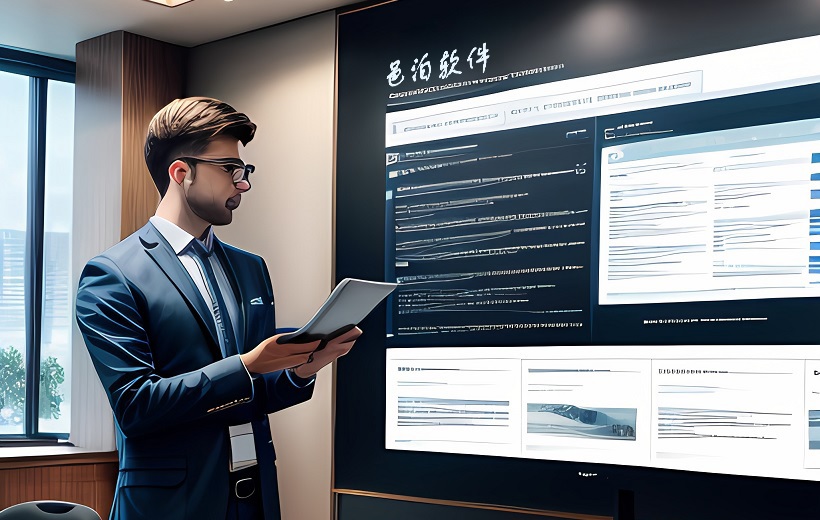IT Director: The Practitioner of Enterprise Information Technology Strategy
As the practitioner of enterprise information technology strategy, the IT director shoulders the important task of promoting the enterprise's informatization process and improving operational efficiency and management level. The IT director is the formulator and executor of the enterprise's information technology strategy. He is responsible for leading and managing the enterprise's IT team and promoting the construction and development of informatization. Based on the overall enterprise strategy, formulate and optimize IT strategies to ensure the close integration of information technology and business development. Develop and implement information security policies to ensure corporate information security and compliance. Pay attention to industry development trends, introduce advanced information technology and solutions, and promote enterprise innovation and development. Pay attention to industry trends, be brave enough to try new information technologies and solutions, and promote corporate innovation and development. Encourage team members to actively explore new information technologies and solutions, stimulate the innovation vitality of the enterprise, and promote the sustainable development of the enterprise.

In today's digital era, information technology has become an important part of the core competitiveness of enterprises. As the practitioner of enterprise information technology strategy, the IT director shoulders the important task of promoting the enterprise's informatization process and improving operational efficiency and management level. This article will provide an in-depth discussion of the IT director’s role, responsibilities, skills and how to deal with challenges, providing strong support for enterprises to succeed in digital transformation.
1. The role of IT director
The IT director is the formulator and executor of the enterprise's information technology strategy. He is responsible for leading and managing the enterprise's IT team and promoting the construction and development of informatization. They need to start from the overall corporate strategy, formulate IT strategies that meet business needs, and ensure that information technology and business development complement each other. At the same time, IT directors also need to pay attention to market dynamics and industry development trends to provide enterprises with forward-looking information solutions.

2. Responsibilities and Requirements of IT Director1. Formulate and implement IT strategy: Based on the overall enterprise strategy, formulate and optimize IT strategy to ensure that information technology and business development are closely integrated.2. Lead the IT team: Establish, cultivate and manage a high-performance IT team to improve the overall strength and execution of the team.3. Promote informatization construction: Responsible for the planning, implementation and management of informatization projects to ensure that projects are completed on time and with quality.4. Ensure information security: Develop and implement information security policies to ensure corporate information security and compliance.5. Optimize IT facilities: Responsible for the planning, construction and maintenance of IT infrastructure to ensure the stability and efficiency of enterprise operations.6. Communication and coordination: Maintain good communication with various business departments and coordinate to solve problems encountered in information construction.7. Innovation leadership: Pay attention to industry development trends, introduce advanced information technology and solutions, and promote enterprise innovation and development.

3. Skills and Competencies of IT Directors1. Strategic planning capabilities: Have an overall view and forward-looking thinking, and be able to formulate IT strategies based on the overall enterprise strategy.2. Team management ability: Good at team building and management, stimulating the potential of team members and improving the overall execution of the team.3. Project implementation capabilities: Have project management experience and be able to effectively promote the implementation of information projects.4. Communication skills: Have excellent communication and coordination skills, and be able to establish good cooperative relationships with various business departments.5. Innovation ability: Pay attention to industry trends, have the courage to try new information technologies and solutions, and promote enterprise innovation and development.6. Leadership: Have excellent leadership skills and be able to lead the team to deal with various challenges and changes.7. Learning ability: Continuously learn new knowledge and continuously improve your own skills and literacy to adapt to the rapidly changing information environment.

4. How IT directors deal with challenges1. Keep up with technological development: Pay attention to industry dynamics and technological trends, and constantly update your own knowledge system to better respond to the challenges and opportunities brought by new technologies.2. Cross-department collaboration: Strengthen communication and collaboration with various business departments to ensure that information construction meets business needs and achieve deep integration of information technology and business development.3. Cultivate talents: Pay attention to team building, actively cultivate and introduce high-quality IT talents, and improve the overall strength and execution capabilities of the team.4. Risk management: Develop and implement risk management strategies to ensure that enterprises can respond to various risks and challenges in a timely manner during the information construction process.5. Continuous optimization: After the construction of the informatization project is completed, it is necessary to continue to pay attention to the operation of the project, and continuously optimize and improve the informatization facilities and solutions to meet the development needs of the enterprise.6. Stimulate innovation vitality: Encourage team members to actively explore new information technologies and solutions, stimulate the innovation vitality of the enterprise, and promote the sustainable development of the enterprise.